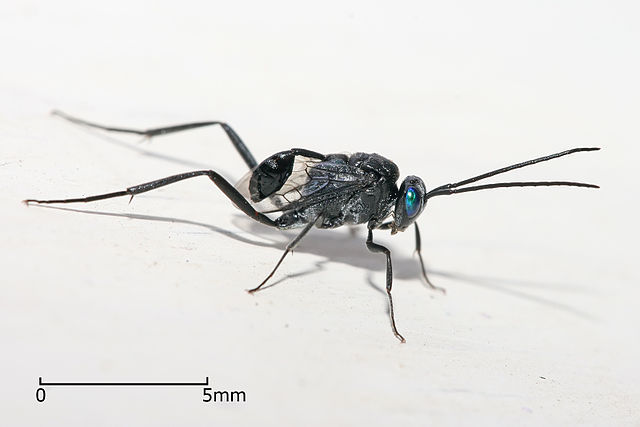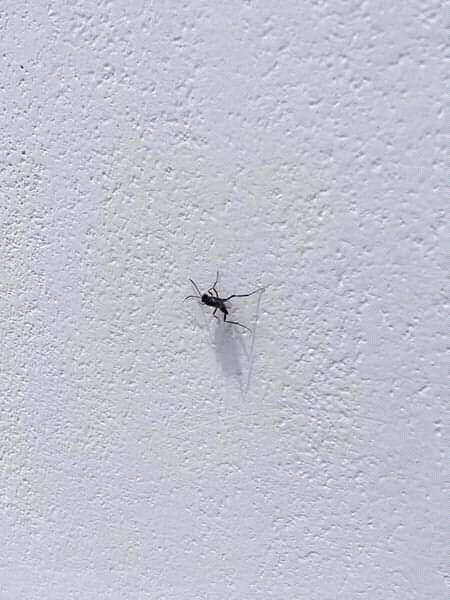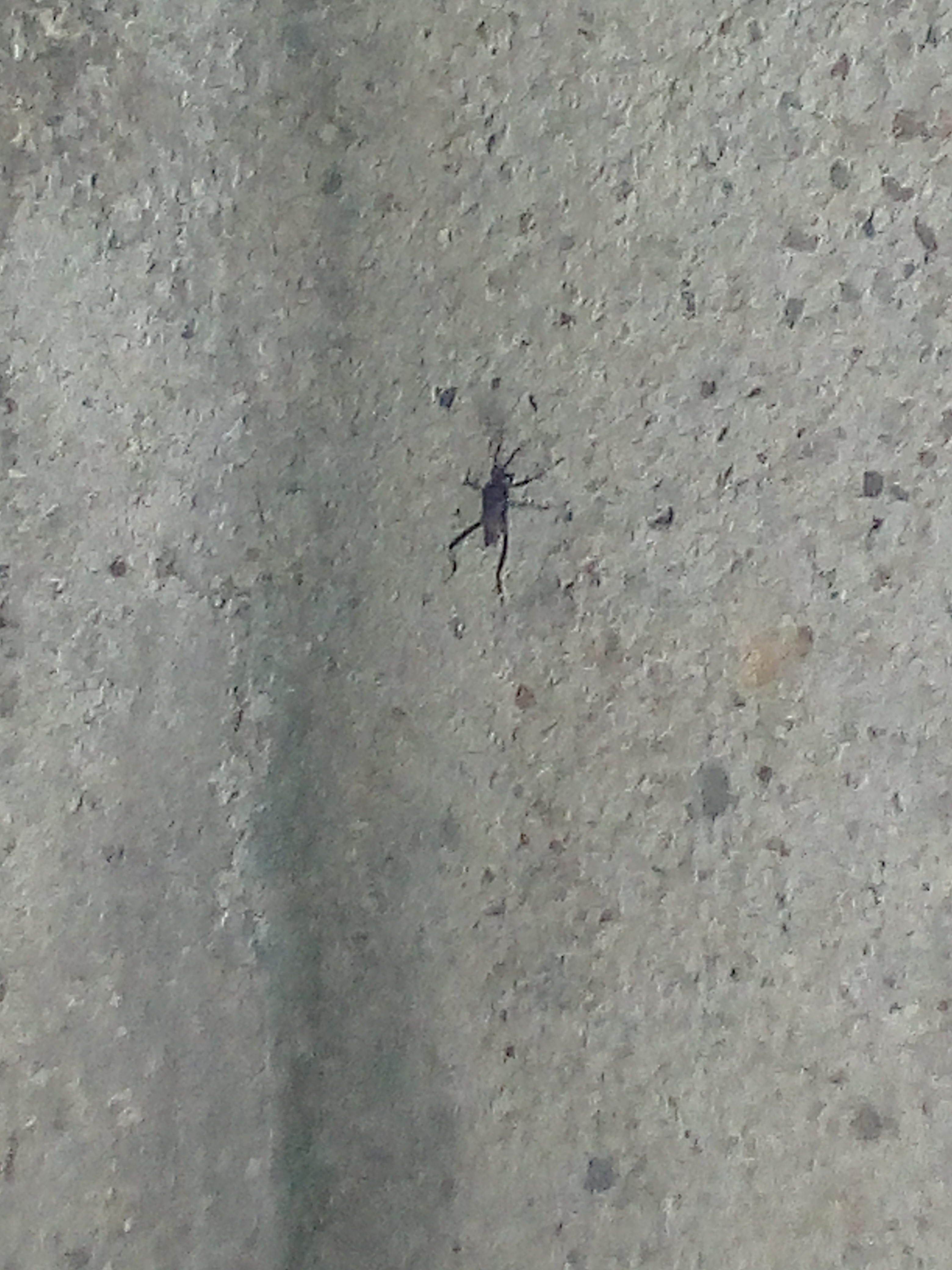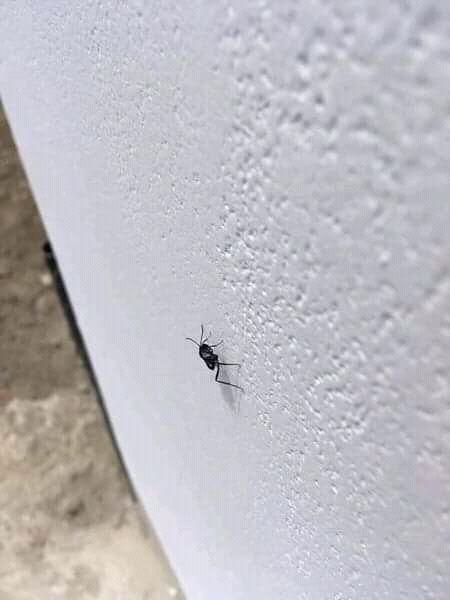[ESP-ENG] Avispa bandera de ojos azules: 5mm de un cazador furtivo.// Blue-eyed flag wasp: 5mm from a poacher.

Hola amigos de #hive, como siempre es todo un placer saludarles y desearles además muchas bendiciónes en este día. En esta oportunidad vengo a hablarles sobre un curioso animalito que durante mucho tiempo e visto rondar lugares de mi casa y que seguramente al igual que ustedes han visto en sus casas rondar de forme sigilosa pero con un objetivo muy específico.
Hello #hive friends, as always it is a pleasure to greet you and wish you many blessings on this day. In this opportunity I come to tell you about a curious little animal that for a long time I have seen hanging around my house and that surely like you have seen in your homes, it has a stealthy way but with a very specific objective.
Se trata de un insecto, del cual siempre tuve la idea que era un mosquito pero que equivocado estaba porque hace poco pude darme cuenta que se trataba de Evania appendigaster, una avispa poco usual llamada además avispa bandera de ojos azules cuyo objetivo en la vida es rastrear y destruir los huevos de cucarachas como todo un cazador furtivo.
It is an insect, which I always had the idea that it was a mosquito but how wrong I was because I recently realized that it was Evania appendigaster, an unusual wasp also called blue-eyed flag wasp whose goal in life is to track and destroy cockroach eggs like a poacher.
Aquí les comparto algunas fotos tomadas en mi casa de esta maravillosa avispa:
Here are some photos taken at my home of this wonderful wasp:





These images are my property taken from my virzo phone.
Ahora bien, conozcamos mas a fondo sobre este magnifico ejemplar cuya dicha tengo de que este cazador furtivo ande por mi casa asechando lo que mejor sabe hacer el arrazar los huevos de cucarachas.
Now, let's learn more about this magnificent specimen whose happiness I have that this poacher walks around my house stalking what he does best, rooting cockroach eggs.
Como ya se los dije esta avispa lleva por nombre Evania appendigaster y es una especie de avispa de la familia Evaniidae. Se desconoce su área de distribución nativa, pero probablemente se originó en Asia. Habita en los trópicos y subtrópicos y en muchas regiones templadas, incluido el sur de España. Es una avispa parasitoide conocida por especializarse en cucarachas.
As I have already told you, this wasp is named Evania appendigaster and is a species of wasp of the family Evaniidae. Its native range is unknown, but it probably originated in Asia. It inhabits the tropics and subtropics and many temperate regions, including southern Spain. It is a parasitoid wasp known to specialize on cockroaches.
En su forma descriptiva, es una de las avispas más grandes con alas delanteras de hasta aproximadamente 7 milímetros de largo. Se distingue de otras especies por la amplia separación de la primera y segunda sección de la coxa, el segmento de la pata que se conecta al cuerpo. Es de color negro. El pecíolo abdominal, la cintura constreñida que sostiene la sección posterior del abdomen, o gáster, está adherida en lo alto del cuerpo. El gáster está comprimido lateralmente y tiene una forma ovalada o casi triangular, sostenida en forma de bandera, una característica de la familia que inspiró el nombre común de avispa.
In its descriptive form, it is one of the largest wasps with forewings up to about 7 millimeters long. It is distinguished from other species by the wide separation of the first and second sections of the coxa, the segment of the leg that connects to the body. It is black in color. The abdominal petiole, the constricted waist that supports the posterior section of the abdomen, or gaster, is attached high on the body. The gaster is laterally compressed and has an oval or nearly triangular shape, held in a flag-like form, a characteristic of the family that inspired the common name wasp.
_-_Fuerteventura_-_Flickr_-_S._Rae.jpg)
En su forma biológica, se reproduce poniendo huevos en ootecas de cucarachas. Las larvas de avispa utilizan los huevos de cucaracha como fuente de alimento. Las cucarachas hospederas incluyen la cucaracha americana (Periplaneta americana), la cucaracha australiana (P. australasiae), la cucaracha marrón (P. brunnea), la cucaracha oriental (Blatta orientalis), Melanozosteria soror y Neostylopyga rhombifolia.
In its biological form, it reproduces by laying eggs in cockroach oothecae. Wasp larvae use cockroach eggs as a food source. Cockroach hosts include the American cockroach (Periplaneta americana), Australian cockroach (P. australasiae), brown cockroach (P. brunnea), oriental cockroach (Blatta orientalis), Melanozosteria soror and Neostylopyga rhombifolia.
Según investigaciónes, las larvas de la especie se han descrito con minuciosos detalles. Se ha secuenciado el genoma mitocondrial completo de esta especie.
According to research, the larvae of the species have been described in minute detail. The complete mitochondrial genome of this species has been sequenced.
La avispa puede ser candidata para su uso como agente de control biológico de plagas de cucarachas. El control podría ser incluso mejor si la avispa fuera liberada junto con A. hagenowii , que tiende a tener una mayor tasa de parasitismo. La avispa se puede criar en condiciones de laboratorio para su posterior liberación. La capacidad parasitaria depende de la densidad de las ootecas huésped. Las tasas de desarrollo y parasitación dependen de la temperatura.
The wasp may be a candidate for use as a biological control agent for cockroach pests. Control could be even better if the wasp were released together with A. hagenowii , which tends to have a higher parasitism rate. The wasp can be reared under laboratory conditions for later release. Parasitizing ability depends on the density of host oothecae. Rates of development and parasitism are temperature dependent.
Referencia consultada:
Reference consulted:
very good work, your post is interesting and well structured
We appreciate your work and your post was manually curated by @none! from the DNA team!
Reach us on Discord to learn more about the project!
Muchisimas gracias por sus palabras!!!saludos y bendiciones..
Felicitaciones @alexnunez, las he visto pocas veces en casa. No tenía idea de lo beneficiosas que son. Gracias por compartir esos valiosos conocimientos.
We appreciate your work and your post has been manually curated by zoology team (oscurity,nelinoeva) on behalf of Amazing Nature Community. Keep up the good work!
very nice! I don't know if it was a coincidence but I once thought I was being stung by one in the neck! XD
Hola muy buenas noches. Muchisimas gracias por sus palabras la cual aprecio.
Y si que teniamos conceptos muy contrarios sobre esa maravillosa y noble avispa mas ahora sabemos su real nombre y objetivo!!!muy agradecido que les halla gustado mi trabajo. Saludos y bendiciones!!
Congratulations @alexnunez! You have completed the following achievement on the Hive blockchain and have been rewarded with new badge(s):
Your next target is to reach 50 replies.
You can view your badges on your board and compare yourself to others in the Ranking
If you no longer want to receive notifications, reply to this comment with the word
STOPCheck out the last post from @hivebuzz:
Support the HiveBuzz project. Vote for our proposal!